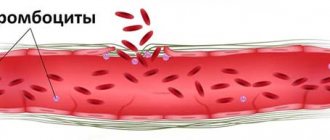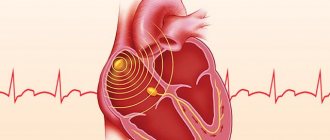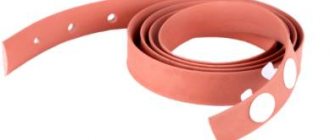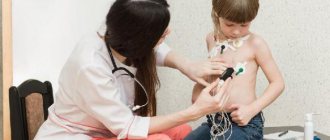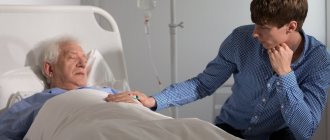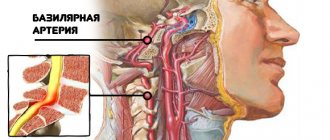home
Articles
Health
Kurilova Alina Petrovna
Pediatrician
14.05.2019
Before you start taking antipyretics, you need to answer a few questions:
- what age is the child?
- How does a child tolerate an increase in temperature?
- Is there a family or child history of febrile seizures?
- Are there any other symptoms of the disease besides fever?
Increased temperature or fever
is a protective-adaptive reaction of the body in response to the influence of pathogenic stimuli, as a result of which a restructuring of thermoregulation processes occurs, leading to an increase in body temperature, which stimulates the natural resistance of the body.
An increase in temperature affects the child’s body both positively and negatively.
Positive influence
is that when the temperature rises in the child’s body, the immune system is activated, phagocytosis increases, the production of antibodies increases and the level of interferon increases, which helps to stop the proliferation of pathogenic microorganisms and overcome infection.
Bad influence
high temperature on a child manifests itself in the occurrence of convulsions (febrile), increased load on the baby’s cardiopulmonary system (heart rate and breathing rate increase). Therefore, fever is dangerous for children with developmental defects of the heart and bronchopulmonary system, and heart rhythm disturbances. Also, when the temperature rises, the functioning of the brain, liver, stomach, kidneys and other internal organs suffers, which is dangerous for children with chronic pathologies of internal organs, symptoms of dehydration, developmental disorders and diseases of the nervous system.
Fever varies:
- with the flow:
- acute (fever up to 2 weeks),
- subacute (up to 6 weeks),
- chronic (over 6 weeks).
- according to the degree of increase in the indicator:
- subfebrile (increase to +38.0 degrees)
- febrile (from +38.0 to +39.0 degrees),
- pyretic (from + 39.0 to +41.0 degrees),
- hyperpyretic (over +41.0 degrees).
- by type of temperature curve:
- constant (temperature fluctuations during the day do not exceed 1 degree).
- laxative (daily fluctuations up to 2 degrees),
- atypical (oscillations are chaotic, varied and irregular),
- debilitating (a combination of laxative and atypical fever with fluctuations during the day of more than 2-3 degrees),
- intermittent (a combination of short-term periods of increase and decrease in temperature to normal values),
- recurrent (alternating periods of temperature increase with periods of temperature normalization from 2 to 7 days).
According to the recommendation of the WHO (World Health Organization), antipyretic drugs are prescribed to children according to age:
- from birth to 2 months at a temperature of +38.0 degrees,
- children from 3 months to 24 months with a temperature of +38.5 degrees,
- children from 1 to 5 years old with a temperature of +39.0 degrees,
- children over 5 years old at + 39.5- +40.0 degrees.
Paroxysmal tachycardia in children
Supraventricular tachycardia
Perform sequential reflex activities that stimulate the vagus nerve.
If the child is over 3-4 years old, carry out:
- massage in the area of the carotid artery lasting 5-10 seconds on the right, then on the left
- Valsalva maneuver (consists in the fact that the child closes his nose and strains for 10 seconds)
For children over 7 years old, additional diagnostic methods are used:
- slow, deep swallowing
- pressing on the root of the tongue with a spatula
- wiping with cold water
It is highly not recommended to use the Aschner test, because retinal detachment may occur.
Sedatives are used for treatment:
- valerian
- valocardine
- corvalol
It is also necessary to take asparkam. The dose, depending on the age of the child, is from 1/3 to 1 tablet.
If the above treatment does not bring results, antiarrhythmic drugs are used. Self-medication is contraindicated, since the intake is sequential - it is determined by the doctor. Verapamil 0.25% is administered intravenously, monitoring blood pressure and heart rate. The dose for children under 12 months is from 0.4 to 0.8 ml, for children from 1 to 5 years old - from 0.8 to 1.2 ml, for patients aged 11 to 15 years - 1.5-2 .0 ml.
Verapamil should not be taken together with beta-blockers and quinidine. Contraindications for taking the drug are the supraventricular form of paroxysmal tachycardia with aberrant ventricular complexes, WPW syndrome.
A 1% ATP solution is quickly injected intravenously, the dose is 0.5-1 ml for preschool children and 1 ml for children over 7 years old. Ajmaline (gilurythmal) 2.5% is slowly administered intravenously per 10.0-20.0 ml of 0.9% NaCl solution at a dose of 1 mg/kg.
Digoxin 0.025% is administered intravenously or intramuscularly. The saturation dose is 0.03-0.05 mg/kg. Saturation rate – 3 days. The maintenance dose is 1/5 - 1/6 of the saturation dose.
If the therapy does not produce results, Amiodarone 5% solution is administered intravenously very slowly at 10.0-20.0 ml of 5% glucose solution at a dose of 5 mg/kg. If there is no effect, transesophageal pacing or electrical pulse therapy is performed.
Ventricular tachycardia
For a child with this form of paroxysmal tachycardia, a gentle regime is introduced, physical activity should be limited, and sufficient sleep. It is important to systematically walk in the fresh air. During an attack, stay in bed. You can't play sports. The diet should contain potassium and magnesium, vitamins. Potassium and magnesium are found in dried apricots, raisins, dried fruits, and baked potatoes. You cannot drink coffee or tea or eat chocolate.
Relieving an attack of ventricular tachycardia:
1. 1-1.5 mg/kg lidocaine 1% is slowly administered intravenously. If there is no effect, I repeat the injection with a 2-fold smaller dose after 5-10 minutes.
2. If there is no effect, a 2.5% solution of ajmaline (gilurhythmal) is slowly injected intravenously into 10.0-20.0 ml of a 0.9% NaCl solution at a dose of 1 mg/kg.
3. If no effect is observed, a 5% amiodarone solution is administered intravenously - very slowly with 10.0-20.0 ml of a 5% glucose solution at a dose of 5 mg/kg.
4. If no effect is observed, transesophageal pacing or electrical pulse therapy is performed.
On the other hand, the approach to each child should be individual.
If the child
- restless or feeling weak
- cannot tolerate muscle pain, headaches,
- there is nausea,
- no appetite,
then you must first use physical methods to improve the child’s well-being
:
- put to bed - this way the body will retain strength to fight infection and calm the child;
- drink fractionally with water or sweetened warm herbal tea with chamomile, linden, cranberry juice;
- provide access to fresh air;
- If there is an appetite, feed small portions of warm food (for example, soup, thin porridge with water, a light breakfast).
Also, according to the clinical course of the fever, apply additional cooling measures.
For “red” or “pink” fever
- the baby's body feels hot to the touch,
- skin is red or pink, moist,
- The child himself does not complain about his health, is active, and does not lose his appetite.
In this case, the child must
- undress,
- wipe with a towel soaked in water at room temperature,
- apply a cool compress to your forehead,
- drink water at room temperature
- and be sure to call a doctor.
For "white or pale" fever
- the child’s limbs and body feel cold to the touch,
- lips and nail beds take on a bluish tint,
- skin is pale and dry,
- There is a disturbance in well-being: the child is lethargic, delirium is possible.
In this case, the child must
- warm by rubbing the limbs with your hands or using warm water (other means are prohibited!),
- put on socks
- cover with a blanket
- and drink warm tea or water.
The use of antipyretics for such symptoms is ineffective - you need to urgently call a doctor!
The exception is children at risk, whose temperature is reduced above 37.1 degrees. These are kids,
- having diseases of the nervous system,
- experiencing convulsions due to a rise in temperature,
- those suffering from chronic diseases of the circulatory system, respiratory system or hereditary metabolic diseases and other risks (overheating, symptoms of dehydration, etc.).
Febrile seizures are diagnosed more often in children under 6 years of age with temperatures above +38 degrees, as well as in children with pathologies of the nervous system at any temperature. It is recommended for such children to reduce their temperature to febrile levels (not higher than +38.0) or to those values recommended by a neurologist.
Usually, against the background of an increase in temperature, the child’s heartbeat and breathing rate increase: the respiratory rate increases by 4 respiratory movements for every degree above +37.0 degrees, and the pulse rate increases by 20 beats per minute for every degree. However, against the background of diseases of the cardiovascular system and respiratory organs, such as developmental defects or heart rhythm disturbances, inappropriate increases or decreases in pulse and breathing are possible. Such children, on the recommendation of a cardiologist and pulmonologist, are prescribed antipyretics up to febrile levels (i.e., not higher than +38.0 degrees).
Children with hereditary metabolic diseases (diseases of the thyroid gland, kidneys, liver, disorders of the immune system and others) and children with imperfect compensatory mechanisms of thermoregulation during fever (these are some children from birth to 2 months) are also prescribed antipyretics on the recommendation of related specialists funds up to febrile numbers.
Overheating - an increase in body temperature due to additional exposure to heat
- prolonged exposure to the sun,
- wearing too much clothing
- excessively wrapping children).
The risk of overheating is associated with the risk of heat stroke. It manifests itself
- not only at elevated temperatures,
- but also in impaired consciousness, convulsions,
- disorders of the heart and breathing.
First aid is to call the ambulance team “112”.
Before the doctor arrives
- undress the child
- move to a cool place or shade,
- provide access to fresh air or blowing with a fan (but not cooled air!),
- apply a cold compress to your forehead,
- wipe the body with cool water or wrap it in a sheet moistened with cool water.
Antipyretic therapy for children should be prescribed strictly individually, taking into account clinical and anamnestic data.
How does tachycardia manifest?
The state of the heart can be quickly determined by the heart rate (HR) - through the pulse, which can be easily felt in large peripheral arteries. Normally, its frequency coincides with the heart rate, since the pulse is the response of the arteries to the ejection of blood from the heart when it contracts. Indicators for a healthy person are 60–80 beats per minute. If your heart begins to beat faster, it may physically feel like it is jumping out of your chest.
However, this does not always happen, and then the presence of tachycardia can be suspected based on a number of other symptoms.
Different pacemakers (sources of impulse generation) are responsible for different types of tachycardia.
Clinical signs of tachycardia
- Pain or discomfort in the chest.
The chambers of the heart contract alternately: while some parts are filled with blood, others are resting. The stronger the tachycardia, the shorter the periods of myocardial relaxation. Working without rest causes pain in the heart.
- Dizziness and general weakness.
In the pulmonary circulation, blood oxygenation (oxygen saturation) occurs. With tachycardia, the time required for complete gas exchange decreases. Rapid contractions of the heart release blood into the vascular bed with a reduced content of O2, which is why the tissues do not have enough of it. To make it easier for organs to receive it, vascular resistance decreases. This results in a compensatory decrease in pressure in the blood vessels, accompanied by dizziness and general weakness. Sometimes it can lead to loss of consciousness.
- Dyspnea.
It occurs both during movement, since during physical activity the body requires more oxygen, and at rest - if tachycardia persists for a long time. The same oxygen starvation leads to the development of shortness of breath: increased breathing is an attempt to restore oxygenation.
- Cyanosis, or blueness of the skin.
With hypooxygenation (decreased oxygen concentration in the body), the blood contains a large amount of reduced hemoglobin, a substance responsible for binding oxygen. Low oxygenation leads to cyanosis of the lips, tips of the ears, or fingers.
Tachycardia can be expressed by less significant symptoms: cough, headache, nausea, sleep disturbances, decreased appetite and performance. These complaints are not typical for an increase in heart rate, but you should mention them when visiting a doctor
Tachycardia at different times of the day
Since rapid heartbeat can occur due to physical activity, emotional reactions or behavioral habits (smoking, drinking too much strong coffee, etc.), an increase in heart rate only during the daytime is not considered a reliable symptom of heart pathology (although it should be alarming).
If tachycardia persists at night, this indicates the presence of pathology. At this time, the heart rate slows down due to physiology, and if the heart rate does not decrease during sleep, remaining consistently high throughout the day, it is necessary to visit a doctor.
At the same time, some pathologies are characterized by daily fluctuations in heart rate. For example, during the day a person may feel tachycardia, but when going to bed at night, they feel the opposite - the heart rate drops below normal, which also leads to problems with sleep, decreased oxygenation and shortness of breath. This condition may be a sign of sick sinus syndrome (SSNS), namely tachycardia-bradycardia syndrome. With this pathology, all symptoms of tachycardia, disturbing during the day, intensify at night due to a drop in heart rate below 60 per minute.
Attacks of tachycardia, related to the time of day, are potentially life-threatening: episodes of dizziness and fainting can result in injury, especially in children and the elderly. Such symptoms are a reason to visit a doctor
